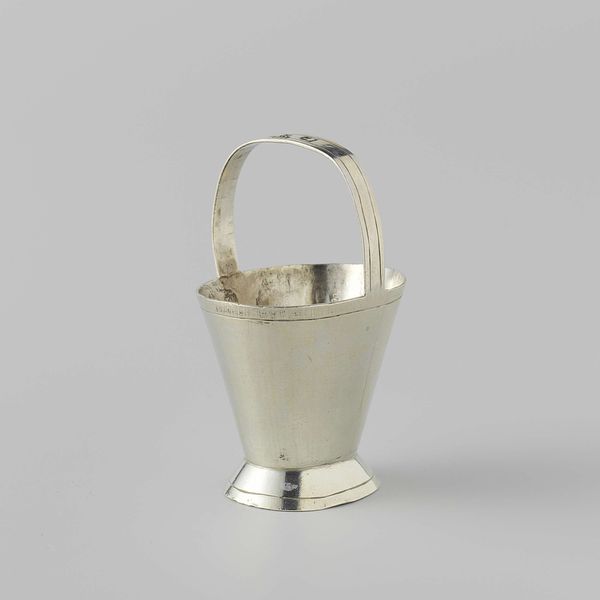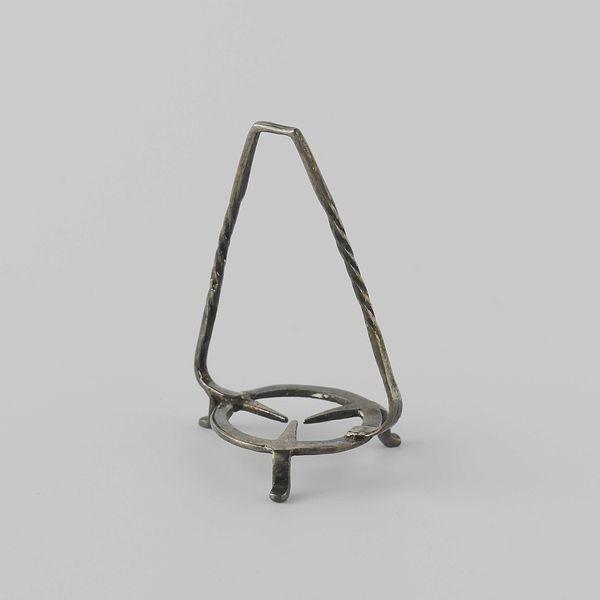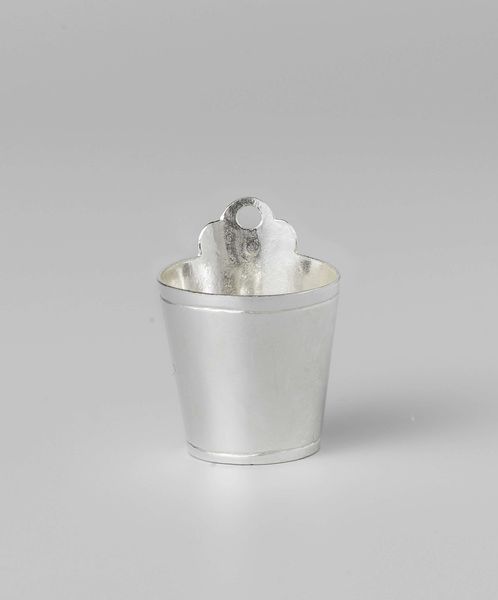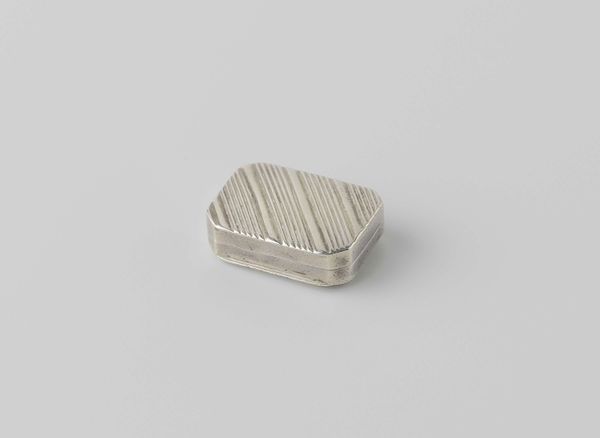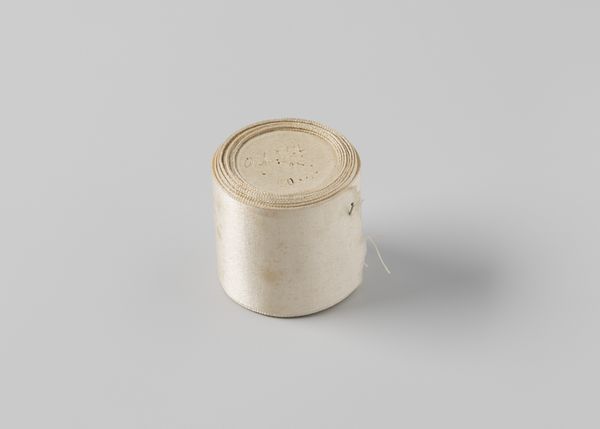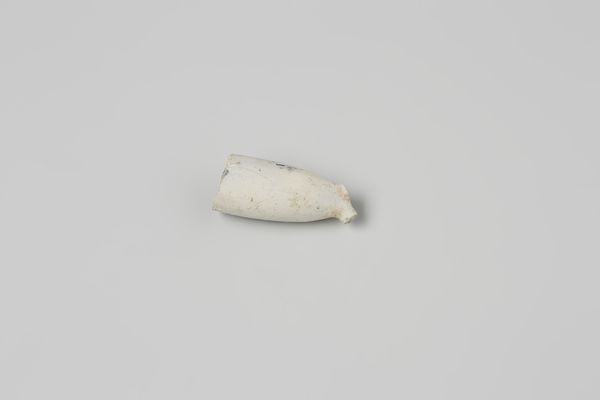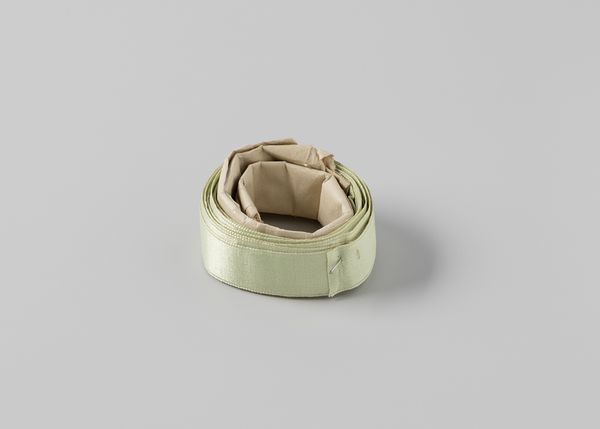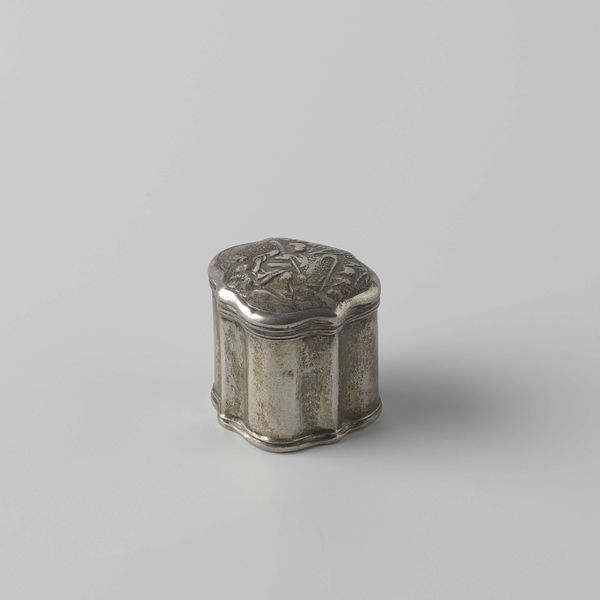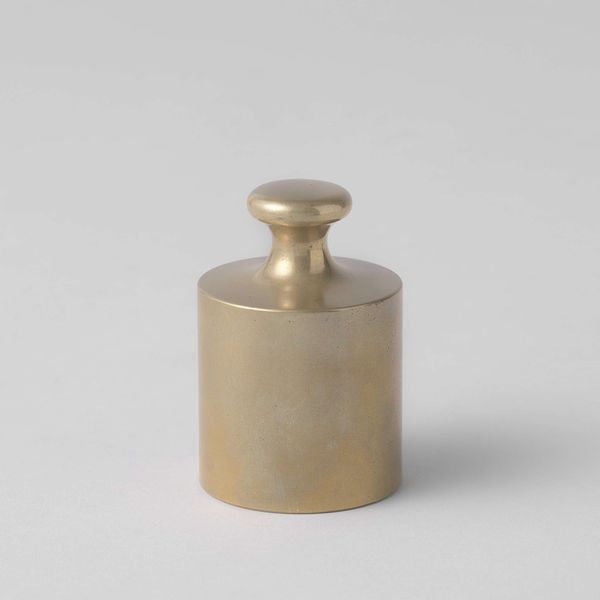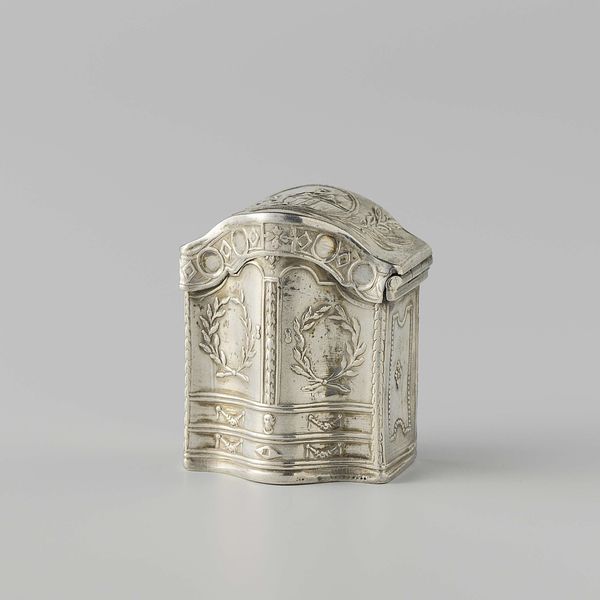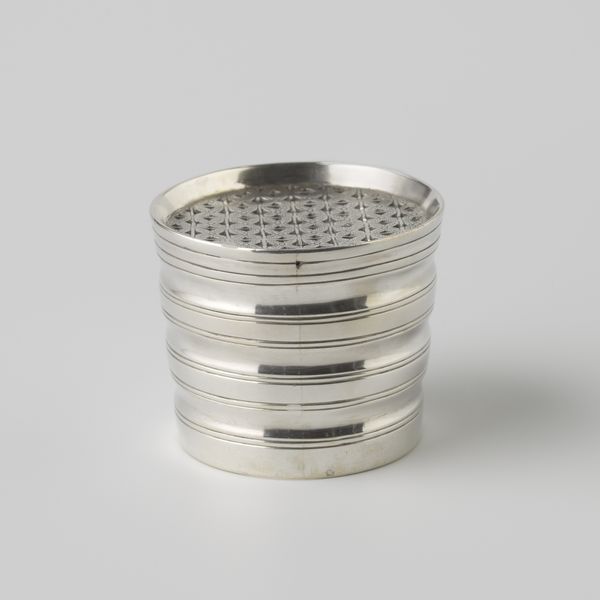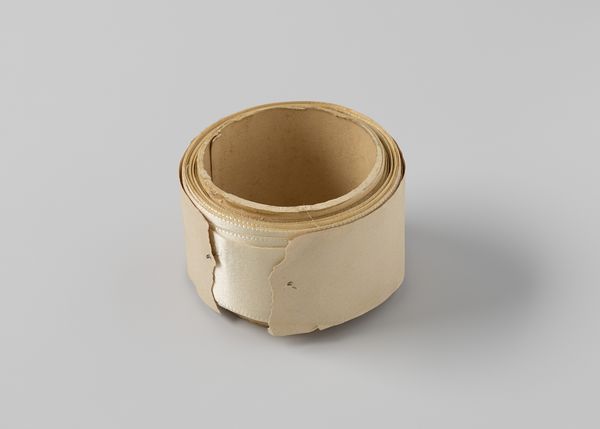
metal
#
metal
Dimensions: height 4.7 cm, width 2.2 cm, depth 1.8 cm, weight 13.29 gr
Copyright: Rijks Museum: Open Domain
Editor: So, this diminutive piece is a metal "Moppentrommel" – literally a "joke drum" – by Hendrik van der Star, dating from 1660 to 1690. It's quite small and feels incredibly tactile. What story does its materiality tell, beyond its intended use? Curator: Immediately, I see a confluence of skilled labor and material value. The meticulous construction using metal suggests a society where both specialized craftsmanship and the extraction and processing of metals held economic and social weight. What kind of individual owned this? Were they flaunting access to material or a deep connection to the artisan world, perhaps even their own metalworking abilities? Editor: That's fascinating. I hadn't considered it as a status symbol. So, would the 'joke' element have perhaps served more as entertainment in upper circles or amongst craftsmen who used the object and shared stories? Curator: Exactly. This small vessel forces us to reconsider typical hierarchical boundaries. Jokes as high-brow entertainment contrast to metal-work and it's grounding within industry, labor, and society as a whole. Could we imagine this "joke drum" acting as an intersection? Consider not only who might have used it, but the workshop it emerged from. Think about the distribution networks which facilitated that creation in the first place. Editor: I suppose its small scale makes those considerations even more crucial, given that it requires detailed crafting. Are there certain construction methods or stylistic elements that imply certain cultural spheres from which the work could come? Curator: Yes! Studying the crafting of similar works can help show which workshops used what specific techniques to produce goods to be marketed in specific towns and trade lanes. Further study might also help determine how production shifted to become more efficient. We could gain a lot from comparative materials and socioeconomic histories! Editor: This is so different from what I initially thought. I never considered its materiality reflecting entire socio-economic landscapes. Curator: Absolutely! Each deliberate action undertaken when working with material carries the echo of complex human interactions, past and present!
Comments
No comments
Be the first to comment and join the conversation on the ultimate creative platform.
